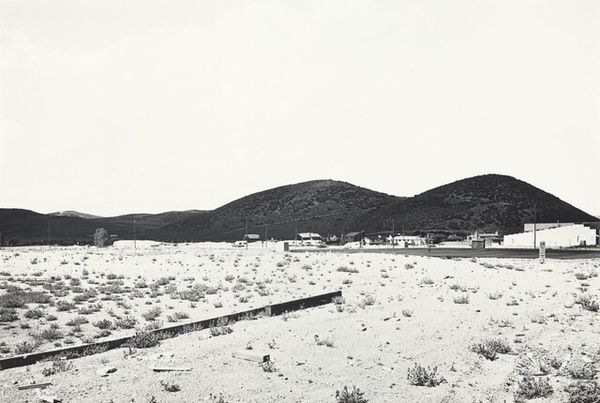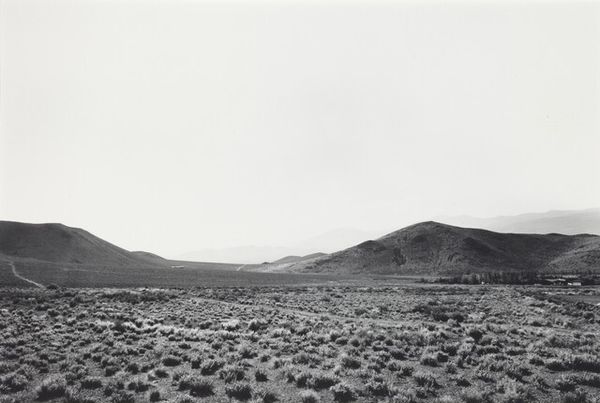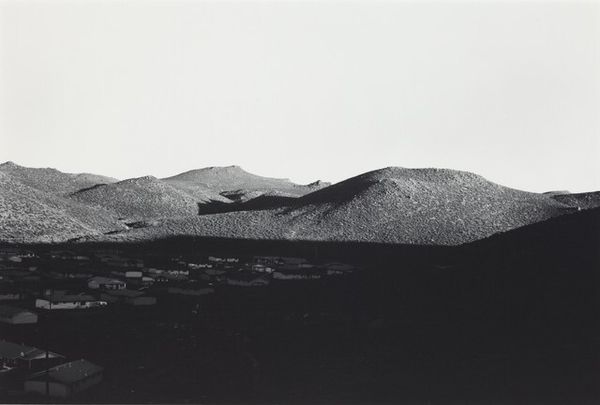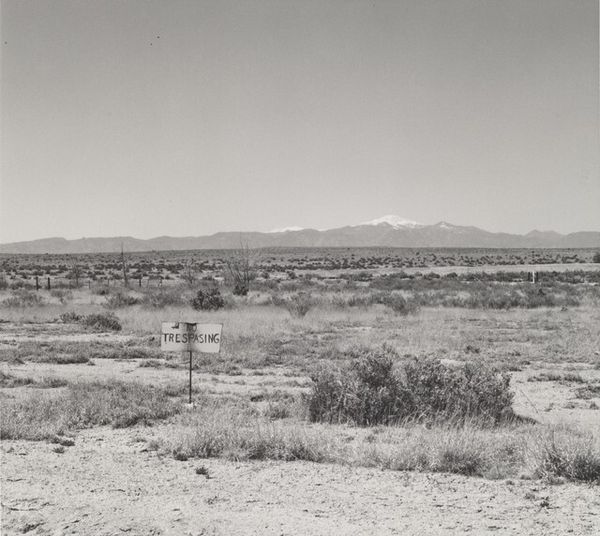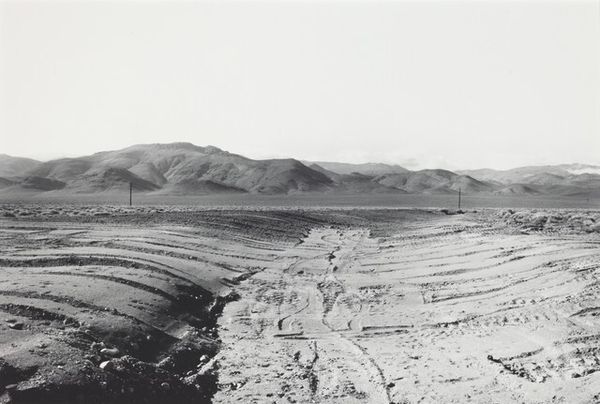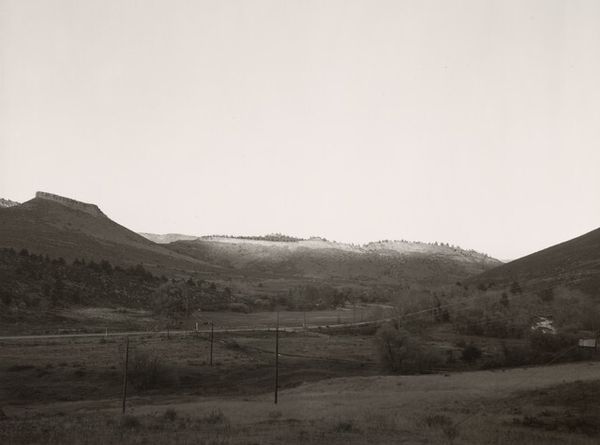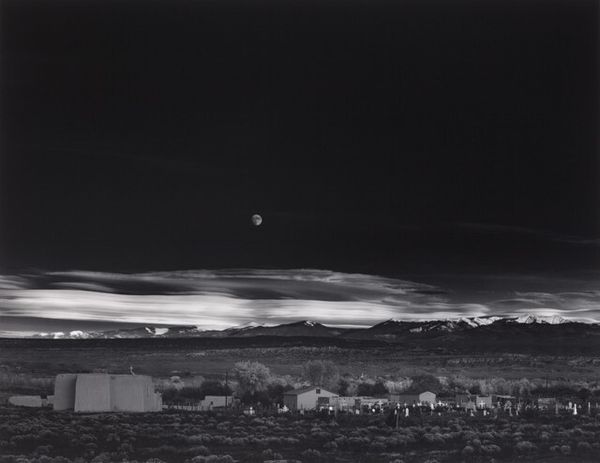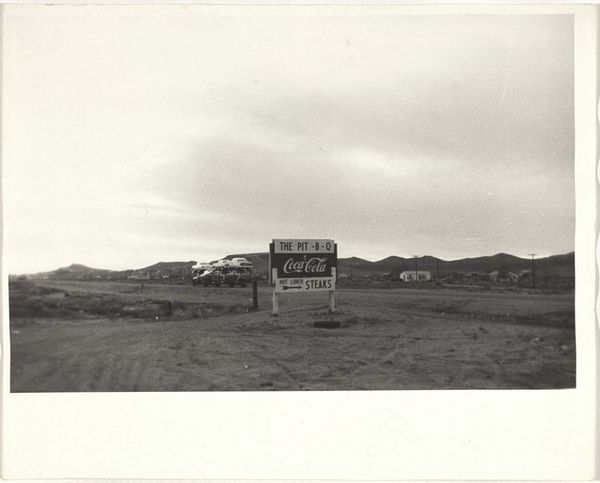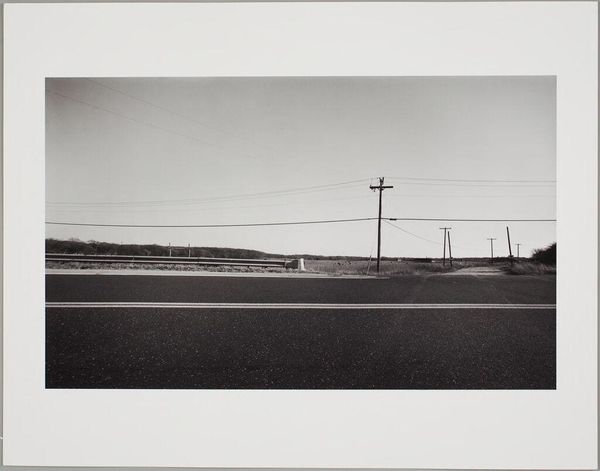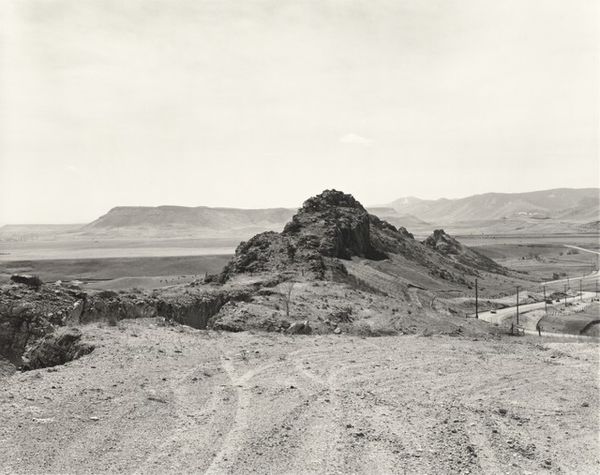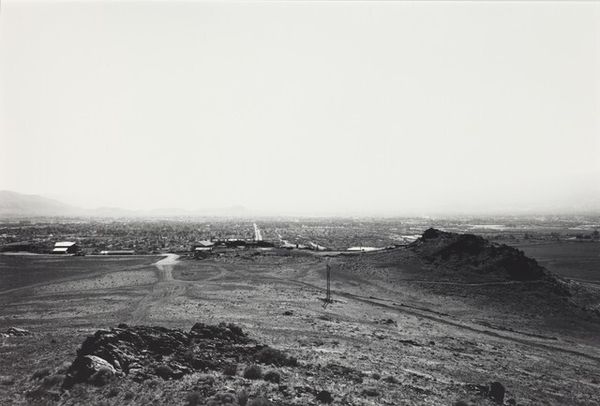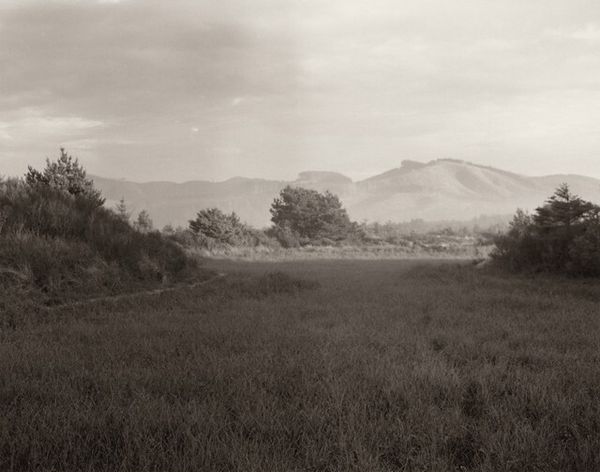
Lemmon Valley, looking Northwest, toward Stead Possibly 1977 - 1978
0:00
0:00
photography
#
conceptual-art
#
black and white photography
#
minimalism
#
landscape
#
monochrome colours
#
photography
#
black and white
#
monochrome photography
#
monochrome
#
monochrome
Dimensions: image: 16.2 x 24.1 cm (6 3/8 x 9 1/2 in.) sheet: 20.2 x 25.3 cm (7 15/16 x 9 15/16 in.)
Copyright: National Gallery of Art: CC0 1.0
Curator: We're looking at "Lemmon Valley, looking Northwest, toward Stead", a black and white photograph, possibly taken in 1977 or 1978, by Lewis Baltz. Editor: There’s a starkness here, almost an emptiness. The high contrast and the seemingly endless horizon give it a kind of melancholic grandeur. Curator: The composition emphasizes geometric structure through subtle modulations of tone. The photographic grays, precisely rendered, contribute to an impression of formal objectivity. This is, of course, characteristic of Baltz’s engagement with minimalist aesthetics. Editor: But there’s an inescapable human element here. Look at that collection of what seem to be trailers, clustered at the bottom of the frame. They read as symbols of transient living, the fleeting promise of the American West against a backdrop of imposing permanence, namely, the land. Curator: Certainly, these visual elements are crucial. They punctuate and give structure to what would otherwise be a mere surface. Baltz uses these shapes to draw attention to the inherent artificiality of photographic representation itself. Editor: The very emptiness surrounding the clusters could be interpreted as potent symbols—social isolation and perhaps, environmental anxieties simmering beneath the surface. The bleak, black-and-white palette amplifies that feeling of cultural desolation. Curator: Perhaps. But for me, these stark tonalities reinforce a visual reduction, bringing attention to the surface quality. Consider also the interplay of dark and light in a pictorial architecture devoid of superficial content. Baltz achieves, in essence, pure form. Editor: Well, beyond the forms themselves, isn’t it compelling to consider this as a statement about human intrusion, the uneasy dialogue between our symbols of permanence versus that raw, indifferent landscape? Curator: These alternative ways of seeing make us reconsider, I admit. It reveals much, depending on your viewing point. Editor: Indeed. It appears stark yet speaks volumes about enduring stories of settlement and aspiration.
Comments
No comments
Be the first to comment and join the conversation on the ultimate creative platform.
